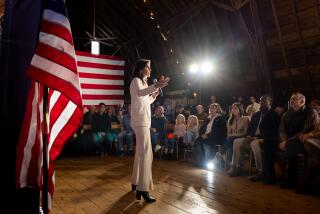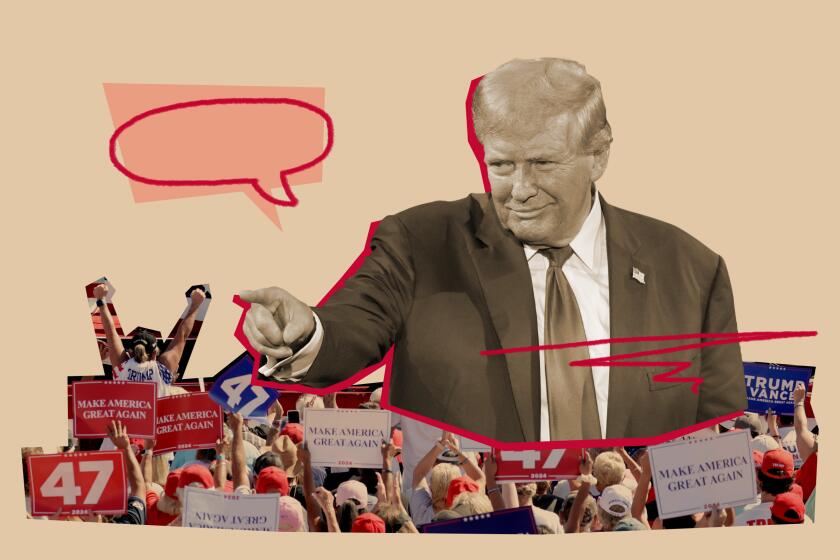HER OWN TERMS
She is the best-known person running for president in the 2008 campaign. But for Sen. Hillary Rodham Clinton, maybe even more than some of her rivals, face-to-face campaigning is crucial.
Many voters formed an impression of her when her husband was president in the 1990s. And maybe they found her ambitious or conniving or imperious. As the Clinton campaign sees it, the best way to combat those impressions is direct contact with voters, where she can make the case that she’s not a caricature, but a flesh-and-blood politician.
So, when she has finished her main campaign speech, she typically takes questions from the audience (not so much the press corps). Then she spends more time working the “rope line,” signing autographs, posing for pictures and listening to people’s stories about their financial or medical problems while her Secret Service detail stands guard.
As a candidate on the trail, Clinton doesn’t dazzle, but she isn’t bad. She could seem a bit brittle as first lady, but she has gotten better now that she’s developed her own political identity. Her uniform is a conservative pants suit. Primary colors only. Day in and day out she’s the same: prepared, unflustered, even.
There’s a cadence to her speeches. She starts low and slow in her flat Midwestern accent (“match” sounds like it has two syllables: “mee-atch”) and builds to a crescendo when she’s making a point.
Audiences seem to like her. But her events are tightly controlled, scripted. She seldom veers off the official message of the day. Too much discipline can backfire, though. In November, Clinton aides were caught planting a question in Iowa at a town hall-style event where she was supposed to be taking spontaneous questions from the crowd.
--
-- Peter Nicholas
More to Read
Get the L.A. Times Politics newsletter
Deeply reported insights into legislation, politics and policy from Sacramento, Washington and beyond. In your inbox three times per week.
You may occasionally receive promotional content from the Los Angeles Times.










